Stretcher Frames
木枠
Kiwaku
CATEGORIES
Stretcher frames are the rectangular wooden frames upon which canvases, primarily those used as the surfaces for oil paintings, are stretched. They are also known as canvas frames.
The fundamental structure of a stretcher frame is made up of wood bars that are joined to make the sides of the frame; crosspieces are also inserted in a grid pattern, depending on the size of the canvas, in order to reinforce the frame. The bars that make up the frame have top and bottom faces. The top faces are sometimes angled slightly or given curved edges in order to reduce the chance that the brush (for example) will come into contact with the wood frame when drawing on the stretched canvas. A wedge may be inserted into the corners of the frame to adjust the surface tension of the canvas. The wood used for the frames is most commonly either cedar or paulownia. Cedar is strong and hard to bend, making it possible to reuse a frame by removing the original canvas and then stretching a new canvas on it. Paulownia is very light but slightly less strong, making it not as suitable as cedar for re-use. In recent years, because of environmental issues among other reasons, frames made with laminated lumber produced from small-diameter cedar and paulownia have also appeared on the market. Since these are made from multiple wood sources, they do not arch and are both less expensive and lighter than materials made from pure cedar; a certain degree of re-use is also possible. In addition, various specialty frames are also available. One type has hinges midway along the long sides, allowing it to be folded in half and thus making it easily portable. Another type is made with thicker-than-normal bars, allowing the canvas to be stretched onto the bars in a wrap-around fashion (in which the canvas is not attached to the sides of the frame, but instead to the bottom), allowing the artist to paint on the sides of the canvas as well.
In choosing good stretcher frames, one should ask: “Has the wood been thoroughly dried?” “Is the wood finely grained?”
As for the size of the stretcher frames, artists began to paint on canvases of certain standard sizes (as they do today) from the latter half of the eighteenth century; up until that point it was the norm to create a wooden frame after the painting was completed, to the specifications of the finished canvas. Standard canvas sizes for painting in Japan today are based of those in France, with sizes grouped by number and different ratios for the shape, which are referred to by letter, including F-, P-, and M-ratio canvases. These standards were set in order to allow for interchangeability of bars for various frame sizes.
In handling these frames, it is important to remember that when using crosspieces that they too, like the outer frame bars, have tops and bottoms; the curved side should be attached facing up.
Stretcher frames can be purchased at most art supply stores.
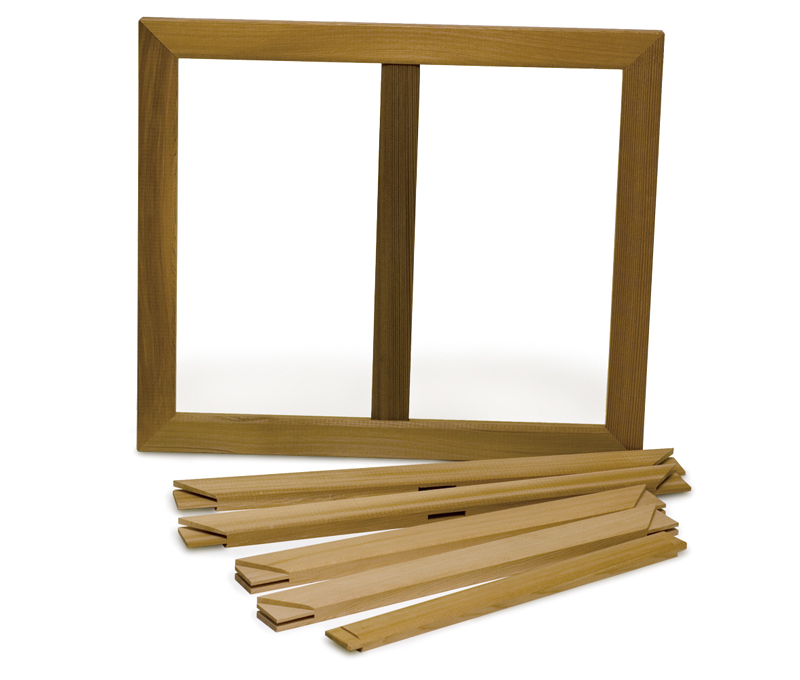
- Types of wooden frames
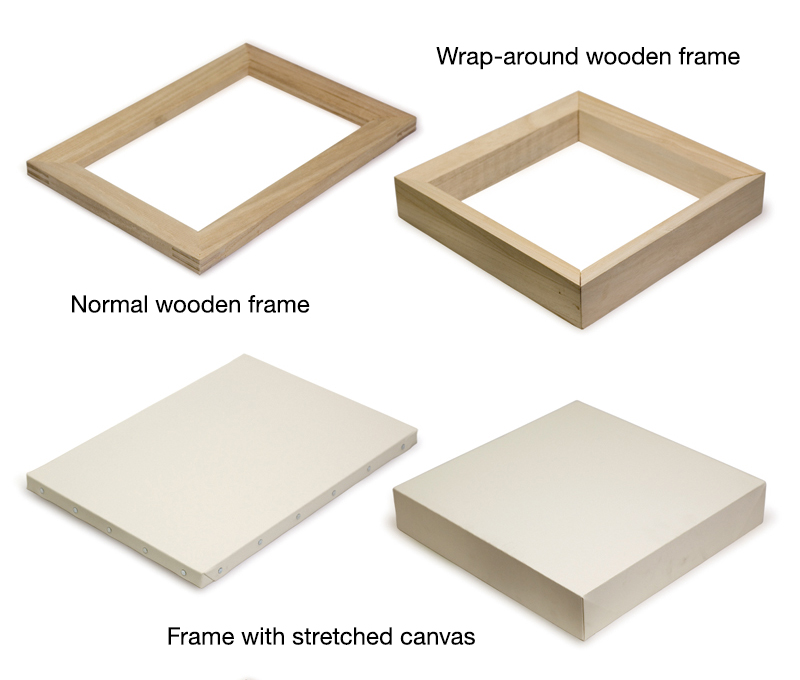
- Material types
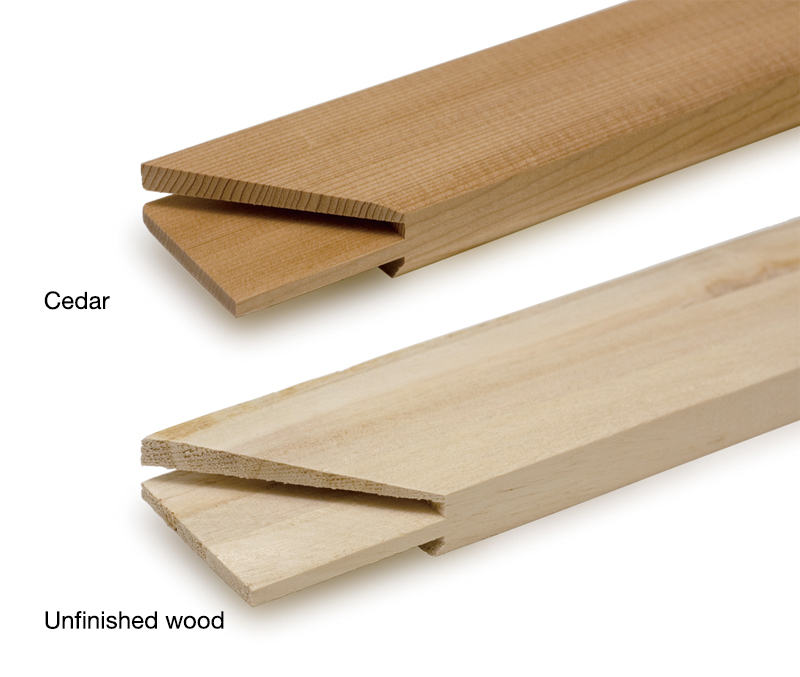
- Wooden frame construction
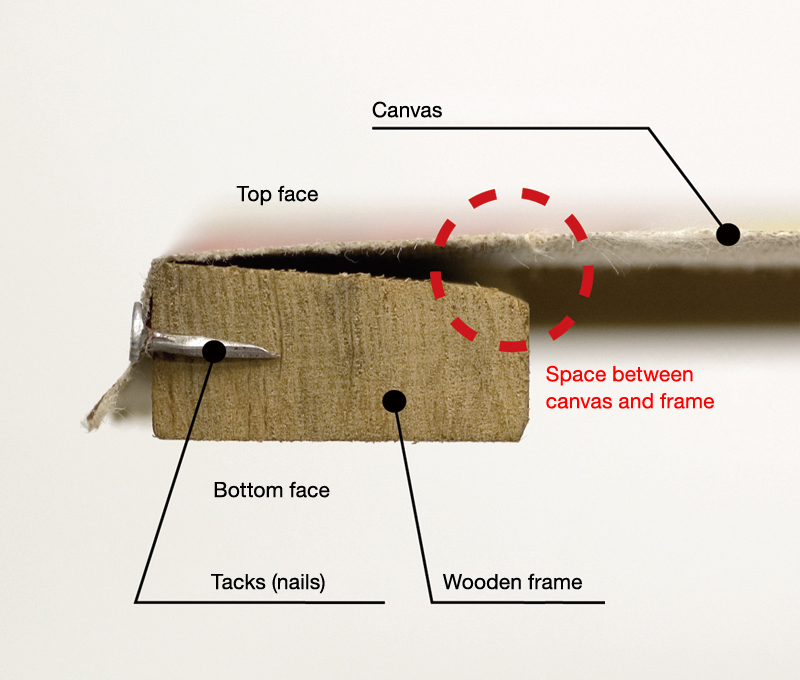
- Wooden frame construction
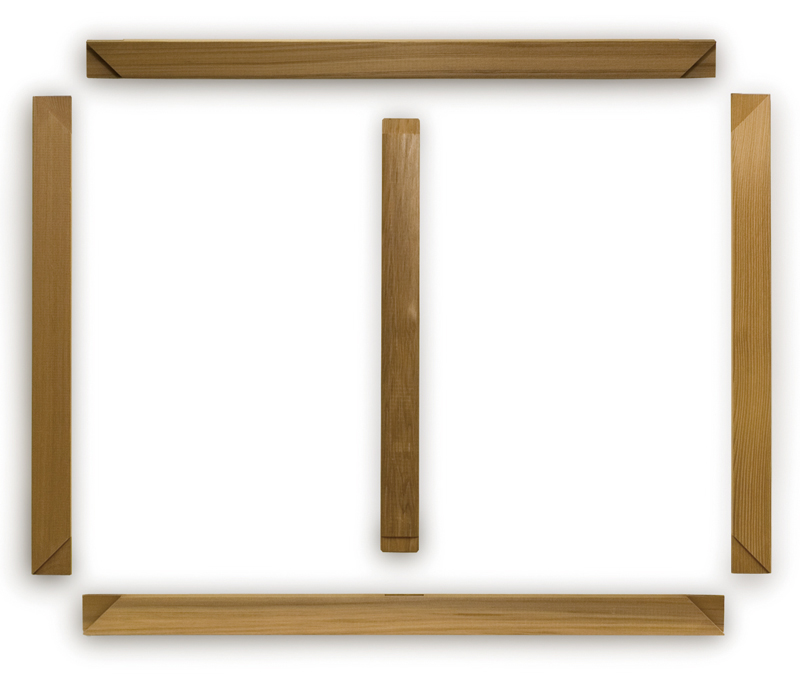
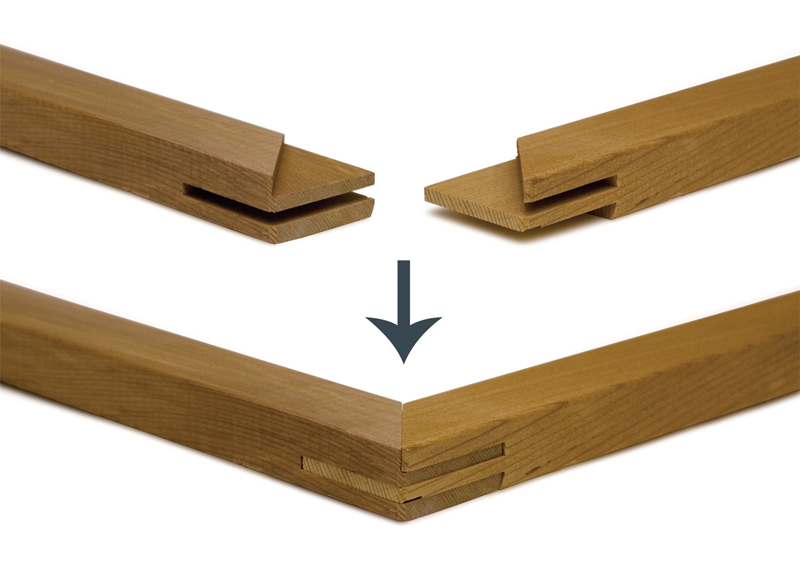 Corner joints
Corner joints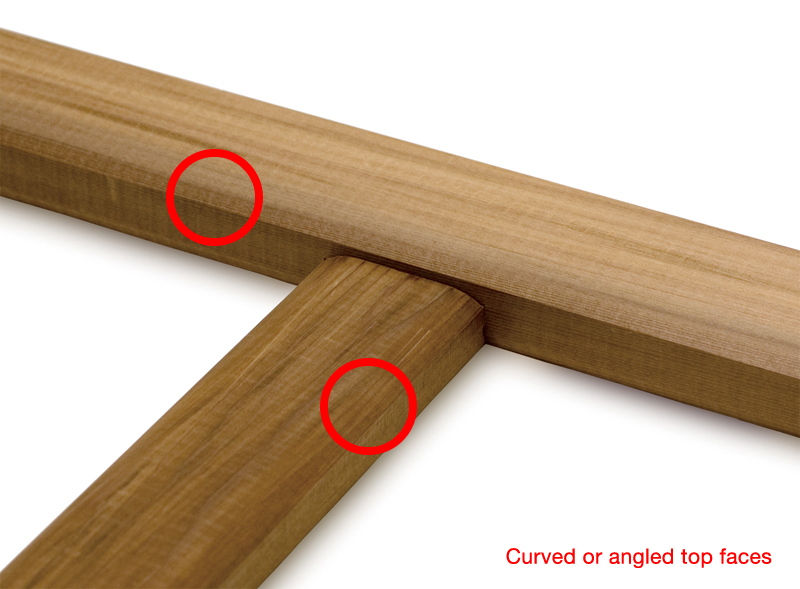 Crosspiece connections
Crosspiece connections
